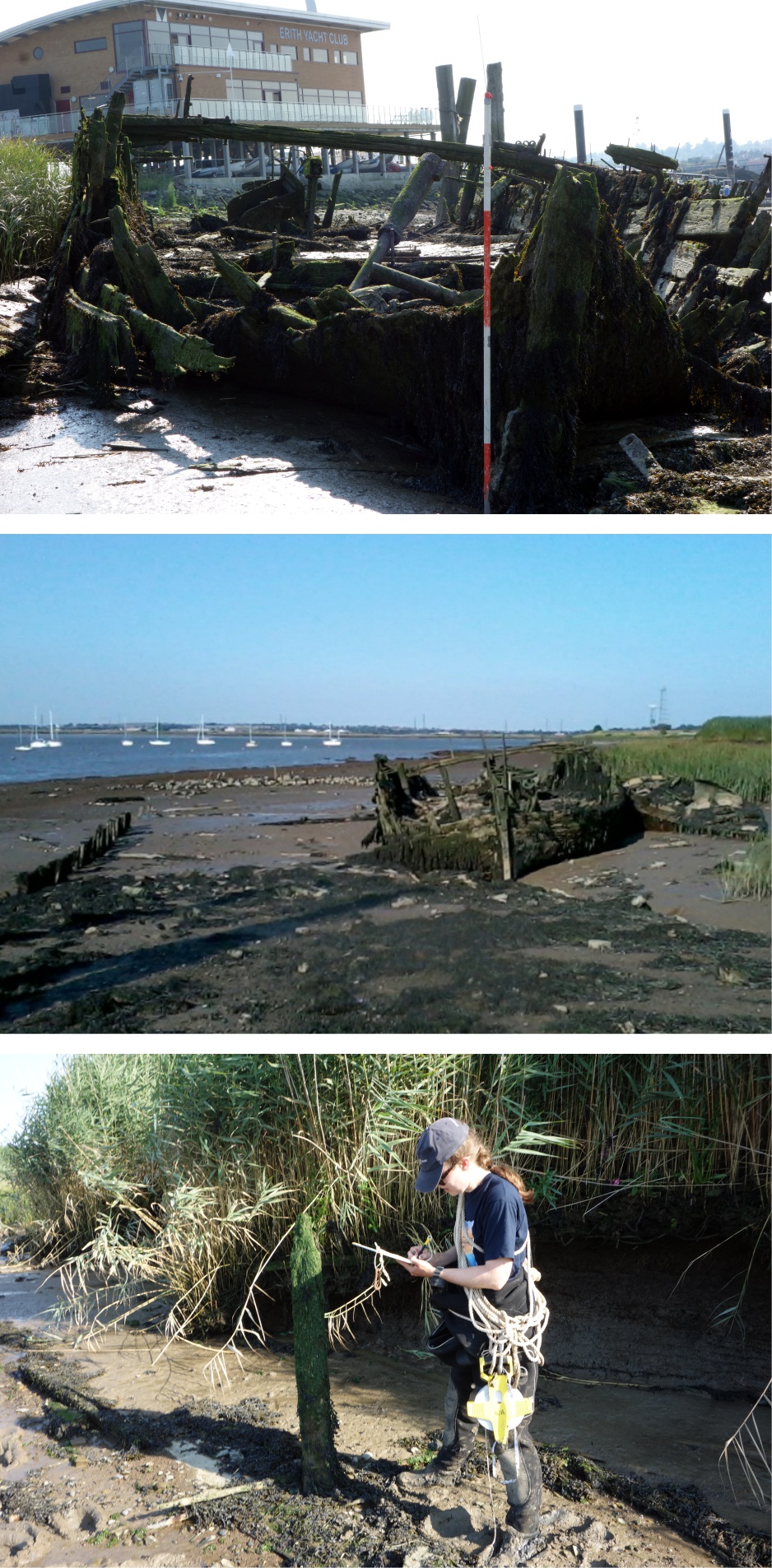
After experiencing high winds and seas, that made it impossible for us to carry out a planned diving survey in the outer Thames Estuary, Wessex Archaeology’s Coastal & Marine team had the fortuitous opportunity to undertake a rapid assessment of a cluster of eight threatened historic wooden hulks and structures in an area of the estuary known as 'The Saltings', south and adjacent to the Erith Yacht Club.
The Thames intertidal area is a unique and archaeologically rich resource. Access to the site was not without its challenges, as thick mud prevented us from traversing over much of the area. This didn’t prevent us from documenting the extant remains in situ, and recording changes that have occurred to some of these structures, such as a 19th century barge named Lady Mary, a large rudder and other hulked vessels, since they were last recorded in 1996, by the Thames Archaeological Survey (which has been superseded by the Thames Discovery Programme).
Due to the cultural complexity of such remains, and their continuing exposure to damage from the elements, these kinds of surveys have an important role in promoting the much-needed preservation of the rich heritage of intertidal sites in the Thames Estuary, and in other areas of the UK. Wessex Archaeology will continue to provide an invaluable service in this area of work, by conducting regular assessments of similarly intriguing archaeological features such as those observed in this survey.
More on this survey and our foreshore work can be found here.